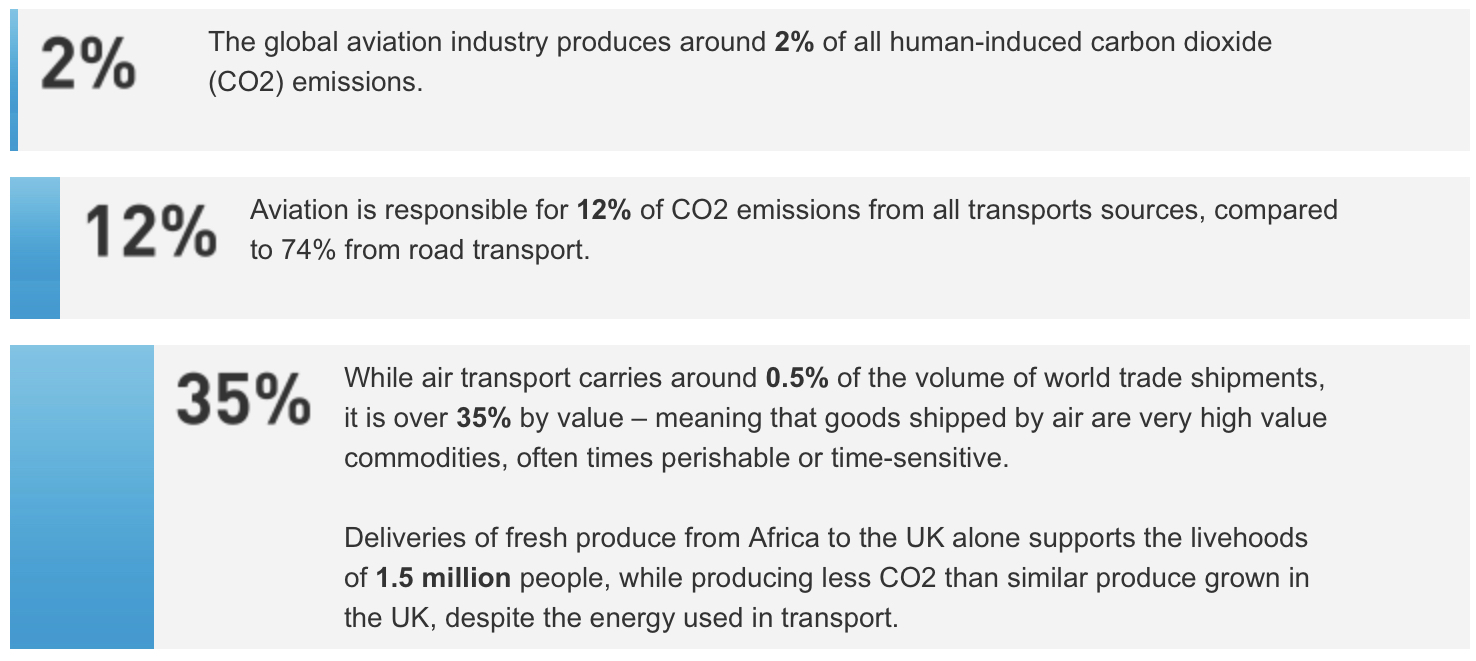
With the hashtag #istayontheground, Swedish teenager climate activist Greta Thunberg is focusing the world’s attention on greenhouse gases created by the aviation sector. Tweeting out statements such as this one on December 30 2018.
“My generation won’t be able to fly other than for emergencies, in a foreseeable future if we are to be the least bit serous about the 1.5° warming limit.”
To the Canadian aviation industry, already one of the most measured and regulated industries on the planet, these attacks are unexpected nonsense. Especially since aviation is the linchpin of the Canadian economy, accounts for only 2-3% of global emissions and is on track to achieve net zero emissions with its new CORSIA plan. But the real head-scratcher comes with the assumption that if you banned flying, emissions would go down. In Canada, most thwarted flyers will just drive and emissions would soar. This is due to the distances between Canadian cities, minimal passengers per car and high gas consumption per km of the cars owned by the average Canadian.
To Greta’s credit she is taking on one of the most difficult of all challenges, attempting to change consumer behavior. She is part of a new global movement called the climate rebellion. This “rebellion” is using doomsday prophecy to shame consumers into changing their consumption habits to lower carbon emissions. To those proposing flying restrictions, the jet engine is portrayed as a satanic demon that must be banished.

If fighting climate change is the real goal, then why not focus attention on shaming urban cowboys buying new pickup trucks? How about the 16 new coal-fired power plants currently under construction around the world? Or the under-regulated cement industry, currently producing four times the emissions of aviation worldwide? One worry is that the decades old anti-airport politics of “Not in my back yard” and radical anti-globalization (anti-growth from the left, anti-immigration from the right) is diverting attention from the real actions needed to combat climate change.
Consider what happens in a city like Toronto if the Greta scenario is enforced and no one can fly into or out of our great city? For starters, the Toronto region would instantly lose the 50,000 direct jobs created by Pearson airport. An additional 300,000 jobs created by companies in the airports employment zone would be in jeopardy. The tourism industry would be devastated. Access to time-sensitive goods such as some fresh fruits and many online shopping services would be degraded. Not that residents will have the money for these goods, due to the lower standard of living in a city cut off from easy access to the world economy.
The hundreds of thousands of jobs in downtown Toronto, the largest employment zone in Canada, would be next. If everyone from technicians to business executives are limited in getting to or from Toronto there will be an exodus of corporations. Toronto’s current rapid growth would crash into reverse. More to the point, unlike Europe, carbon emission would increase not decrease, thanks to Canada’s tyranny of geography and logistics.
Greta says we should just take the train. This works in Europe which has a trillion-dollar diesel/electric train network as a substitute to air travel connecting half a billion people in an area smaller than Canada. To give you an idea of the size difference, you can drop Germany and Spain into the Canadian province of Ontario and have room left over for Switzerland. Unfortunately, unlike Europe, Canada has only a handful of cities close enough for a viable passenger rail route. Even with Government subsidies of 10 cents a passenger km, VIA rail must share over-crowded rail tracks with grain shipments and other slower freight trains. For most Canadian destinations, taking a train is not possible today and thanks to our country’s size and population density, it never will be a cost effective substitute to flying.
To understand why emissions will increase if flying is banned, it’s important to understand how people react when they are banned from doing something. They find substitutes. In Canada today the substitute for flying is driving, not taking a train. Most Canadians live within a half-day driving distance of a major American city. The stream of locals driving to the United States to take a flight would become a flood. All that driving will increase emissions. For the Toronto residents, Buffalo would become their new logistics hub. This “import parity effect” is already playing a role in undermining Canada’s new carbon tax.
Driving in Canada can produces several times the carbon emissions per km compared to flying. The devil is not in the well-understood and agreed-upon climate science. It is in the poor understanding of how to incentivize our technologically-advanced consumer civilization to reduce emissions. Consider that the average Canadian car currently gets 8.9 litres per 100 km and averages less than two people on board per trip.

The bombardier Q400, the backbone of domestic Air Travel in Canada, gets 3 to 3.4 litres per 100 km per passenger seat depending on the route. You might counter by pointing to the controversial “contrail effect” but the Q400 never creates this effect as it never flies above 25,000 ft. It flies in a straight line asphalt-free, but only if we have the airport capacity to support it.
The aircraft replacing the Q400, the Canadian designed and built C-Series jet (now renamed the Airbus A220), is even better. An A220 can get under 2 liters per 100 km per passenger seat on many routes. Flying in Canada is 2 to 3 times more carbon-efficient than driving, the only viable substitute for most Canadians. The future of air travel is even more promising. Within a decade the first hybrid electric regional jets are expected to be coming to market, cutting fuel consumption dramatically.

If flying is banned or even constrained by congestion, the substitute effect kicks in and travellers drive to their destinations producing more carbon emissions. By building new infrastructure, we can reduce congestion, enable the efficient movement of passengers by aircraft and reduce emissions. Instead of closing congested Toronto Pearson airport we should reduce emissions by building a new airport east of the city in Pickering and provide locally accessible aviation to everyone.
Sorry Greta, Canada is not Europe and banning flying will increase not decrease emissions. If you have to travel long distances in Canada please take one of the few trains or buses if you can. Above all else don’t drive and please fly with pride not shame.
Carbon emissions calculators and reference:
Radiative Forcing factor Controversy
ICAO carbon emissions calculator.
Great article Mark. Nice to see you understand the value of my very favourite 400 , the C Series and the direction the “electrics” are taking us all. However here is where we differ… you say:
“Instead of closing congested Toronto Pearson airport we should reduce emissions by building a new airport east of the city in Pickering and provide locally accessible aviation to everyone.”
A..Toronto is not even at 50 % of capacity by the numbers, and is unlikely to ever get close, given the future you so ably outline. Therefore:
B.. Pickering is unnecessary, redundant, expensive, and ecological ill advised when considered in conjunction with the existing Oshawa airport and viewed though the lens of Toronto island and London city uk airports.
The Minister of Transport should reassume Oshawa as per his contract, place it ( bid it out) on a operationally sustainable 80 year contract as per his National Airport System (NAS) model and put Pickering “out to pasture”. It is his best option.
Someone here mentioned that the fuel consumption of an Airbus is less than 3 litres per passenger 100 km and that this matches modern passenger cars. Not even a Prius can match that efficiency. Most compact cars, in reality, don’t even come close.